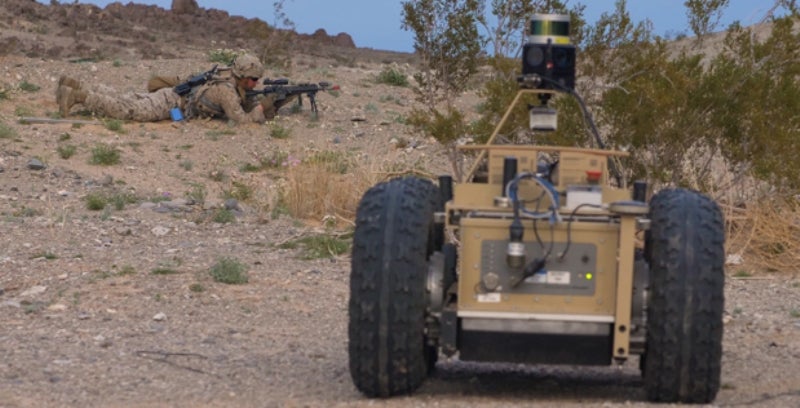
The US Defense Advanced Research Projects Agency (DARPA) has demonstrated Squad X Experimentation programme that will see ground forces work in tandem with artificial intelligence (AI) for battlefield dominance.
During a recent field test, the Squad X programme worked in coordination with US Marines at the Air Ground Combat Center in Twentynine Palms, California.
The objective of the demonstration was to track the progress of the two complementary systems that facilitate teaming between infantry squads and AI and unmanned systems.
The teaming is intended to facilitate better decision-making in complex, time-critical combat situations.
DARPA Tactical Technology Office Squad X programme manager lieutenant colonel Phil Root said: “We are in a race with potential adversaries to operationalise autonomy, and we have the opportunity to demonstrate autonomy in a way that we don’t believe any nation in the world has demonstrated to date.
“Developing hardware and tactics that allow us to operate seamlessly within a close combat ground environment is extremely challenging, but provides incredible value.”
Last year, DARPA performed experiments with CACI’s BITS Electronic Attack Module (BEAM) Squad System (BSS) and Lockheed Martin’s Augmented Spectral Situational Awareness and Unaided Localization for Transformative Squads (ASSAULTS) system.
The two systems focus on teaming between manned and unmanned systems and are designed to provide battalion-level insights and intelligence to small squads.
The latest experiment on the Lockheed Martin system saw a distributed common world model featured in scenarios transiting between natural desert and mock city blocks. Squads wore vests that were fitted with sensors.
Unmanned ground and aerial systems that participated in the experiment featured live and simulated electronic surveillance tools, ground radar, and camera-based sensing.
DARPA noted that the systems provided reconnaissance of areas ahead of the unit. Other key functions included flank security, surveying the perimeter and reporting to squad members.
Squad members received alerts on their handheld Android tactical assault kits (ATAKs). The devices provided options to act on the findings made by the autonomous systems or adjust the search areas.
Completion of the third experiment allows CACI to move into phase II. Meanwhile, Lockheed Martin is expected to perform its next experiment later this year.
The army expects to start concurrent development of the Lockheed Martin ASSAULTS system in FY19 and FY20.



